John Hurrell – 7 March, 2016
I think the key to grasping this complex exhibition, and the depth of Clark's rapport for her subject matter, is to watch the filmed interviews first, listening to the ten charismatic personalities that she chats to. Then you can start identifying the individual faces in the sets of photographs from different time periods and locations. Different clubs and different types of sexuality.
Auckland
Fiona Clark
For Fantastic Carmen (Part of THE BILL)
20 February - 11 March 2016
Starkwhite (upstairs)
For Pink Pussycat Club (Again part of THE BILL)
20 February - 22 April 2016
These couple of shows are part of the Auckland Pride Festival celebrations, two of many events rejoicing in the thirtieth anniversary of the Homosexual Reform Bill. Because of interest in its historical content Fiona Clark’s solo Artspace show has just been extended by a week, and the Starkwhite show (like Clark’s Artspace one after the 11th), will later be augmented by the work of other artists.
For Fantastic Carmen is a presentation involving seven suites of photographic images, spread around give each selection isolation and to (incidentally) introduce the exciting new architectural modifications of Artspace. It looks very different from the old ‘square room at the top of the stairs’ that it used to be.
I think the key to grasping this complex exhibition, and the depth of Clark’s rapport for her subject matter, is to watch the filmed interviews first, listening to the ten charismatic personalities that she chats to. Then you can start identifying the individual faces in the sets of photographs from different time periods and locations. Different clubs and different types of sexuality. (The other option would be to look closely at the Go Girl catalogue.)
Now all these interviews with Carmen Rupe, Daphine Waharoa, Niccole Duval, Wayne Miss K, Tina de Malmanche, Mot, Pat Robb, Marge, Virginia, and Natasha (in pairs or/and singly) are terrifically informative, but they should have been separated and put on to several monitors with loops. That would enable visitors to zero in on people of interest, go and look at some photos from a particular period if they got restless, and then come back for more talk. As it is now, if you miss something, or don’t quite grasp a point, you have got to wait about ninety minutes before that particular conversation comes round again. The film doesn’t help the static images the way it should. The sound quality is inconsistent and its length is impractical.
Clark first acquired a public profile in the mid-seventies when her images in The Active Eye exhibition attracted surprising public anger. One Christchurch reviewer’s headline raged, “It may be art, but it’s also indecent,” while Luit Bieringa, the show’s assembler, was berated: “He should have known better.” The police response was to look at the two Clark works at Auckland City Art Gallery, but not remove them. They never turned up at the next venue. (See comments below.)
If you look at the (remade) black and white images of queens, transsexuals and female impersonators, and the taunting, defiant (I think very funny) sardonic texts added by her friend Karl in biro around the photographs, you can compare them with the more recent interviews which are much friendlier and more relaxed accounts of life within the Auckland LGBT community and club scene. They’re very different in mood.
That gallery visitors allowed themselves in the seventies to be baited (“Aren’t you furious you hung up closet queens”; “How many of you boys would like to suck these tits?”) is astounding. The use of the word ‘fuck’ pressed a lot of buttons, as did the suggestion that the readers were not ‘straight’ either. As is stated in some of the support writing, that time was the era of the burgeoning of performance and provocation.
This is a richly complicated, very emotional exhibition. There are many varied stories, ranging from Clark’s surprising and querying documentation of Arnold Schwarzenegger in Sydney to friends tragically dying of aids. Many of the subjects here are no longer with us, for you will notice kawakawa leaves tucked behind the frames.
In the office there are also images of the extraordinary cross-dressing (often imprisoned) habitual embezzler, Amy Maud Bock, who successfully persuaded in 1909 a wealthy heiress to marry her, hoodwinking her into thinking she was an eligible (male) sheep farmer. The outraged media roared when the marriage quickly collapsed. There is also a copy of a recent book on her by Jenny Coleman.
In this show, what consistently comes across is Clark’s interest in friendships and emotional allegiances. These through various commonalities and loyalties sustain these LGBT communities, which until very recently were always considered marginal or alternative. They have deliberately made themselves much more visible now - with significant political impact. Those terms like “marginal” and “alternative” can’t so easily be applied, because ‘mainstream’ is now something far more porous, with its dominance highly contested through visual and vocal impact - even if the word “minority” is still mathematically accurate.
John Hurrell
Recent Comments
John Hurrell
Thanks for contributing your p.o.v. to the forum, Ms Lee-Duncan.
Ellie Lee-Duncan
I can understand your confusion John, but I think you might find it useful to read a bit more on ...
John Hurrell
An astute point, Eleanor. I grasp what you (and Fiona) are saying, though in my mind 'gender' is more restrictive ...
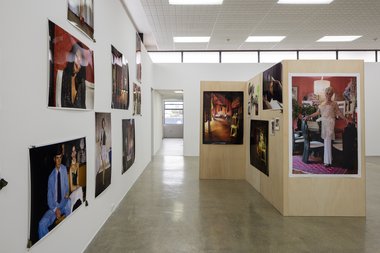
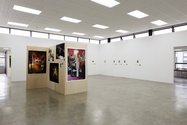
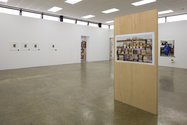
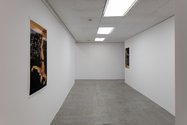
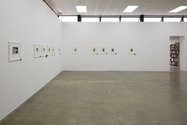
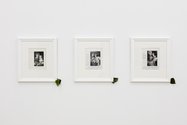
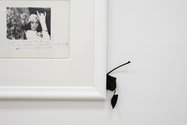
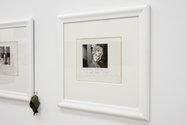
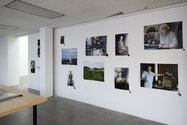
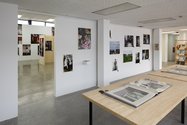

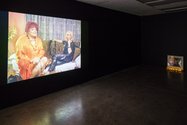
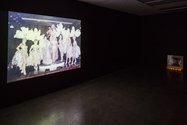
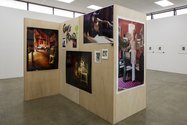
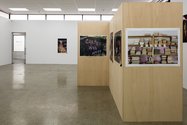
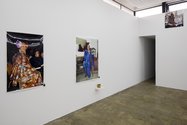
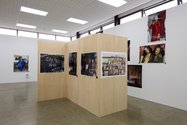
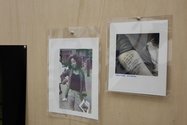
 Advertising in this column
Advertising in this column Two Rooms presents a program of residencies and projects
Two Rooms presents a program of residencies and projects



This Discussion has 9 comments.
Comment
Fiona Clark, 9:51 a.m. 7 March, 2016 #
John - So, what evidence is there for this statement ?
"The police response was to confiscate two of Clark’s works. They were never seen again.".
From the records and files I have - The police requested to view the 2 images as an Indecency Prosecution had been made by Patricia Bartlett. The Auckland Art Gallery then removed the works from the frames and placed the 2 images on the AAG Directors office desk. The police visited the AAG and viewed the works on the 4th March 1976. The police did not take the works or remove them from the AAG. When the whole show moved to the next venue the frames where the 2 images had been removed from, were empty.
I asked the police for them back at the time. They gave me the police file and confirmed they hadn't removed them from the AAG. They told me to ask AAG.
AAG still havn't answered me !.
Fiona Clark.
John Hurrell, 11:11 a.m. 7 March, 2016 #
Thanks Fiona, for the good information. I owe the Police an apology and have corrected the text.
jim barr, 3:40 p.m. 7 March, 2016 #
Fiona's photos had a very rough reception from the art gallery profession in the seventies albeit often via instructions from local body Mayors. The Govett-Brewster withdrew the two works (they were available to see in the Director's office), The Robert McDougall and Sarjeant both withdrew them as did Waikato. Auckland was the 11th venue for the tour and feebly (most of the others at least attempted to show them before being instructed to take them down)cancelled the whole exhibition rather than test the police's judgement that the works were 'indecent documents'. Whether the images reached the Hawkes Bay the 12 venue or the Dowse is hard to know but they never made it back to Fiona that's for sure. The Artspace exhibition along with being a terrific testament to Fiona's importance is also a great sign of how things have changed for the better.
Fiona Clark, 6:12 p.m. 10 March, 2016 #
"Different clubs and different types of sexuality " ...
you viewed occupying, the occupation of gender - not 'groups' ...
John Hurrell, 7:10 a.m. 11 March, 2016 #
I think I get your point, Fiona. I implied discrete divisions, and not a more general mingling. Sure.
Ellie Lee-Duncan, 12:43 p.m. 15 March, 2016 #
Hi John,
I just wanted to draw your attention to this sentence: "Different clubs and different types of sexuality."
Are you sure you aren't confusing gender with sexuality? Of course, Clark's work does address people with non-heterosexual sexualities, but surely a more visible focus of these works is her emphasis on different types of gender identity and gender performance?
John Hurrell, 2:06 p.m. 15 March, 2016 #
An astute point, Eleanor. I grasp what you (and Fiona) are saying, though in my mind 'gender' is more restrictive and limited (say three or four types) than 'sexuality' (at least a dozen varieties). 'Gender' clings to biology perhaps? Is not 'gender performance' another way of saying 'sexuality'?
Ellie Lee-Duncan, 2:50 p.m. 15 March, 2016 #
I can understand your confusion John, but I think you might find it useful to read a bit more on these topics.
Sex, gender, and sexuality are three different aspects and although often lumped together, are quite disparate topics.
Sex, is what you would define as "clinging to biology" rather than gender. Sex is our physical, biological genes and genitals (male, female, or intersex), and should not be confused with gender.
Gender is how someone identifies as, and is often separate from sex. Yes, a majority of people identify with their assigned sex, eg A person is born with male genitals may identify as a male. Gender is nor "restrictive and limited"- some people identify as other than their assigned sex at birth, and go through corrective surgery, identifying them as transsexual. Others may not have surgery, but still identify as a different gender, and may be transgender.
Gender performance is not "another way of saying 'sexuality'". Gender performance is the expression of gender, whether it is one someone identifies with, one someone is assuming, or one someone is performing.
Gender identities are not limited to "three or four types", there are actually many types of gender identities, and I have put a link below for you to educate yourself with.
Sexuality is NOT gender. Gender is who someone is, sexuality is who someone is attracted to romantically or sexually. Thus, gay, lesbian, bisexual etc would fall under the category of sexuality.
The term LGBTAI+ encompasses both gender identities and sexualities since they are both 'not mainstream', underrepresented areas. I have included some links below, which I hope you find helpful, since it seems that you have a bit more research to do before writing effectively on such issues.
Thanks again, Ellie
www.genderqueerid.com/gq-terms
www.genderdiversity.org/resources/terminology
John Hurrell, 4:06 p.m. 15 March, 2016 #
Thanks for contributing your p.o.v. to the forum, Ms Lee-Duncan.
Participate
Register to Participate.
Sign in
Sign in to an existing account.